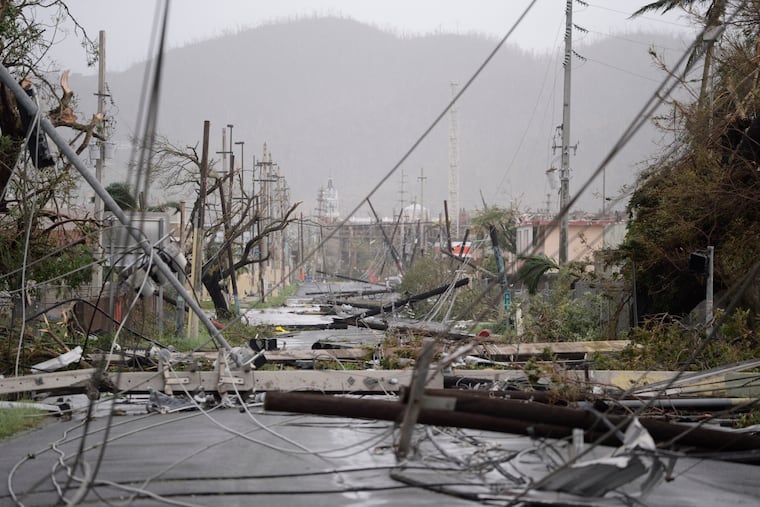Hurricane Lee to stir storm waves and rip currents at the Jersey Shore, but is expected to pass well off the coast
The consensus is that Lee will pass Jersey well offshore. But it's early.

While Hurricane Lee almost certainly is going to make waves at the Jersey Shore — possibly big ones — the consensus during the weekend was that the Philadelphia region and the rest of the Mid-Atlantic would be spared any direct impacts.
Computer models Saturday were showing a variety of potential tracks over the next several days for a volatile storm that had intensified dramatically.
But, “In the worst case scenario, it’s still a couple hundred miles off the coast,” said Grady Gilman, a meteorologist with AccuWeather Inc.
The National Hurricane Center said it was way too soon to know where and how Lee might impact the East Coast or Bermuda, although it was sure to continue to act as a massive plunger in the Atlantic, generating potentially beach-eroding storm waves.
» READ MORE: In updates, forecasters had warned that this would be an active hurricane season
At 5 p.m. Saturday, the center reported that Lee was about 1,500 miles east of the Florida coast, moving west-northwest at roughly 10 mph with maximum sustained winds of 115 mph, still a “major” hurricane.
Lee underwent a spectacular intensification with its peak winds increasing by 80 mph in just 24 hours to become a Category 5 hurricane Thursday with maximum winds of 165 mph. It was only the seventh Atlantic hurricane in the satellite era to experience a similar increase in such a short period, according to Philip Klotzbach, hurricane specialist at Colorado State University.
Late Friday night, its top wind speeds dropped to 115 mph, but the center says they will increase to 140 mph on Monday and that it will remain a major hurricane — winds of at least 111 mph — through the remainder of the five-day forecast period.
The track
“Chaos theory” and weather systems over the United States and the North Atlantic will have a lot to say about Lee’s career, said Gilman.
The hurricane center has Lee migrating west, staying well north of the Caribbean islands and making a sharp northward turn about 350 miles east of Florida’s eastern coast.
AccuWeather’s track, which goes out seven days, has Lee a few hundred miles east of Cape May at 8 a.m. Saturday.
Bear in mind that the hurricane center’s cone of uncertainty expands to 205 miles five days into a forecast, and it doesn’t even list an uncertainty zone for seven days out.
Speaking of uncertainty: AccuWeather is saying Lee may make landfall anywhere “from New England to Atlantic Canada or Atlantic Canada or perhaps instead stay out to sea with a sweep to the east of Newfoundland.”
Spaghetti
The so-called spaghetti diagrams produced by computer “ensemble” forecasts — in which a variety of numerical-model runs produce results that generally are only slightly different — have been clustering on an offshore path.
One exception Saturday was an outlier model that took Lee through Florida and into the Carolinas, something no one is forecasting. Recall that in 2019 President Donald Trump got into some hot water when he said that Alabama would be threatened by Hurricane Dorian, based on a spaghetti diagram outlier. That drew howls of protests from National Weather Service meteorologists in Alabama who insisted their state was in no danger.
» READ MORE: Trump created a stir in 2019 when he suggested Dorian might hit Alabama
AccuWeather’s Gilman said that ultimately Lee’s path will depend on the strength of an upper-air system over the United States due to move off the coast during the week.
Winds from the south, part of the clockwise circulation around high pressure over the North Atlantic, will guide Lee northward, but the system coming off the land will determine Lee’s speed and power, he said.
“That’s how the weather works,” said Gilman. “Everything’s connected.”